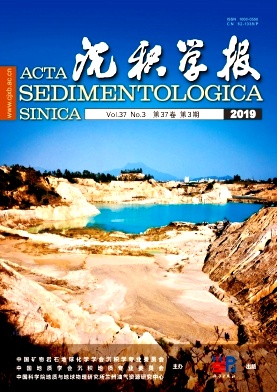Magnetic Properties of the Cretaceous Shaxian Formation Stratum in Fujian Province and Their Environmental Significance
doi: 10.14027/j.issn.1000-0550.2018.155
- Received Date: 2018-05-28
- Rev Recd Date: 2018-07-21
- Publish Date: 2019-06-10
-
Key words:
- environmental magnetism /
- magnetic minerals /
- Cretaceous /
- Red beds /
- Shaxian Formation
Abstract: The giant thick Cretaceous stratum that is widely distributed in Southern China is regarded as fluvio-lacustrine sediment and contains a wealth of information about paleoclimate and paleoenvironmental change. The climate during the Cretaceous period represents one of the "greenhouse states" of Earth's history. Study of Cretaceous climate change can inform current and further greenhouse climate research. This paper reports a preliminary study on the magnetic properties of three Cretaceous Shaxian Formation sections located in Shaxian and Yong'an, Sanming city, Fujian Province. Rock magnetic parameters (including magnetic susceptibility, frequency-dependent magnetic susceptibility, remnant magnetization, hystersis loop, and temperature-dependent magnetization), the diffuse reflectance spectrum (DRS), and chroma parameters (lightness L*, redness a*, yellowness b*) were measured and analyzed to discuss the variations in magnetic properties, their environmental significance, and the origin of red pigments. The results show that:1) The main magnetic minerals of the red and yellow beds are hematite and goethite, respectively. Both contain paramagnetic minerals and a few ferromagnetic minerals. The content of these weakly magnetic minerals is low, so the numerical value of the magnetic susceptibility is low. 2) The hematite content in the siltstone is higher than in the sandstone. 3) The redness and yellowness are controlled by the hematite and goethite content, respectively. Hematite and goethite were formed before the diagenetic stage. The details about the formation stage need further study. Hematite was mainly formed in the provenance area and can carry the detrital remnant magnetization, which is important to the magnetostratigraphy. 4) Red bed hematite suggests hot weather, and yellow bed goethite suggests local wet conditions. Because the magnetic properties were controlled by many factors, further research is needed to determine the environmental significance of the magnetic parameters.
| Citation: | LÜ, Bin, LIU XiuMing, GUO Hui, ZHENG XingFen, CHEN ZiXuan, HE MeiJu. Magnetic Properties of the Cretaceous Shaxian Formation Stratum in Fujian Province and Their Environmental Significance[J]. Acta Sedimentologica Sinica, 2019, 37(3): 519-531. doi: 10.14027/j.issn.1000-0550.2018.155 |






 DownLoad:
DownLoad: